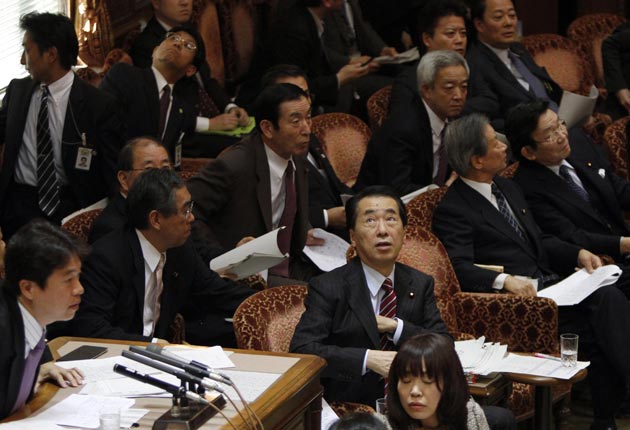The earth shook, and then the merciless deluge of water hit

Your support helps us to tell the story
From reproductive rights to climate change to Big Tech, The Independent is on the ground when the story is developing. Whether it's investigating the financials of Elon Musk's pro-Trump PAC or producing our latest documentary, 'The A Word', which shines a light on the American women fighting for reproductive rights, we know how important it is to parse out the facts from the messaging.
At such a critical moment in US history, we need reporters on the ground. Your donation allows us to keep sending journalists to speak to both sides of the story.
The Independent is trusted by Americans across the entire political spectrum. And unlike many other quality news outlets, we choose not to lock Americans out of our reporting and analysis with paywalls. We believe quality journalism should be available to everyone, paid for by those who can afford it.
Your support makes all the difference.In Japan's parliament there were nervous looks, then a growing sense of panic. At the site where the earthquake struck, there was nothing less than sheer fear.
From the moment the Sendai earthquake struck yesterday afternoon at 2.46pm local time, the disaster was accompanied by a barrage of perhaps unprecedented live images and photographs that somehow managed to give at least a sense of the scale of the disaster.
One of the first images to emerge was of the country's Prime Minister, Naoto Kan, sitting in a meeting of a parliamentary committee in Tokyo, when the room started to shake. The premier, wearing a striped tie, reached into his pocket and looked around him. In the committee room, the faces of his colleagues slowly began to fill with deep unease.
In Sendai, the epicentre of the blast, the offices of a local government office rocked and shook. Angst and concern were written across people's faces. In a local supermarket, staff struggled in vain to hold items in place on the shelves. And this was before the 50 aftershocks were felt.
The city's airport was the location of some of the most distressing images, as the tsunami swept inland, flooding the runways and besieging the buildings. On the footage shot by NHK TV, it was easy to make out the people who had clambered onto the roof, desperate to avoid the water. It was unclear what was going to happen to them and many more like them.
Footage from the city of Miyako, 125 miles north of Sendai, showed similarly devastated residents looking on powerless as whole neighbourhoods were swept away by the rising waters, apparently lifted clean out of their foundations by the force of the tide. Images of swaying towers in Tokyo, although unnerving to the untrained eye, at least demonstrated that in the capital most major structures were reacting as they were designed to – swaying with the impact rather than toppling. But residents of the capital were taking no chances. One journalist on Tokyo Broadcasting System Television read the news wearing a hard hat.
Elsewhere the scale of the floods were made apparent by aerial shots that showed apparently minute trucks and vessels being swept along by the unstoppable tide. The devastation of the waters was matched only by the awful sight of fires breaking out, among them one at an oil refinery in Ichihara, Chiba, where giant fireballs rose from container buildings and emitted plumes of thick black smoke.
Officials talk of hundreds dead and many thousands more missing. For now, the full scale of the disaster remains unclear, and is likely to emerge only as rescue teams reach the exposed northern coast of Japan and assess the damage. But already it is apparent – from images taken in Natori City, Kesennuma and Hitachinaka – that the impact will be vast, deadly and in many cases overwhelming. Amid the churning brown water, buildings have been set ablaze, roads swept away as if they did not exist – and in cities such as Tokyo, perhaps the centrepiece of the world's most modern conurbation, everything has come to a halt.
Hundreds of thousands of people were forced to walk for hours to make their way home. One of the most powerful and frightening images to emerge from the quake and its aftermath was that of the tsunami itself roaring unhindered across the ocean, the footage apparently beamed live from a television camera crew aboard a helicopter. With its frothy white horses and surging power, the wave looked like something from the famous Guinness "Surfers" advertisement. If only.
Join our commenting forum
Join thought-provoking conversations, follow other Independent readers and see their replies
Comments